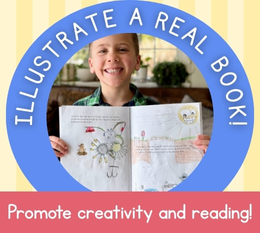The Old Schoolhouse® Product & Curriculum Reviews
With so many products available we often need a little help in making our curriculum choices. The Old Schoolhouse® Magazine family understands because we are in the same boat! Do you need more information on a product before you buy? With over 5,500 products listed in 52 easy-to-use categories, much of the information you need to know is only a click away! Let our reviewer-families help yours.
Intermediate Science through Children's Literature: Over Land and Sea - Grades 4-7 Review by Teri Lucas
By Carol M. and John W. ButzowTeacher Ideas Press
P.O. Box 6926
Portsmouth, NH 03802-6926
http://www.teacherideaspress.com
Focusing on earth and environmental themes, Intermediate Science through Children's Literature takes your student beyond textbook learning through the use of 14 well-known titles while spanning the disciplines of middle school curriculum.
The authors, Carol and John Butzow, stress the importance of understanding the conceptual framework of science as opposed to the acquiring of vast amounts of factual knowledge. They believe that it is the link between the student's current knowledge and the assimilation of new information, the forging of the familiar and the unfamiliar, where actual learning takes place. They assert that young people more easily grasp new ideas when they are presented in story form. Does this sound a little like a modern day interpretation of what we "homeschoolers" affectionately term as the Charlotte Mason method?
After a short introduction, Intermediate Science through Children's Literature is broken into two areas: land and sea. At the beginning of each chapter is a highlight of the literature selection with an explanation of the various concepts covered within the unit. For example, the book used for the American Prairie study is Sarah, Plain and Tall. Several of the concepts covered in this unit include agriculture, the prairie ecosystem, storms and weather, the positive and negative effects of the wind, determination of vegetation by climate, frontier life in the late 1800s and early 1900s, and habitat. There are 48 separate activities suggested with the first utilizing descriptive information from the book to create a visual map of the farm. Activity #8 has the student making a predator-prey chart for a list of animals found on the prairie. Activity #24 has the student design and assemble a "paper" quilt. This could easily be adapted to actually sewing a quilt square to include home economics. In other words, there are so many ideas featured for each book that you should never be found wanting. In fact, you may even be inspired to brainstorm a few creative projects of your own. Maps, puzzles, and science experiments adorn the pages. Answer keys are located in the back of the book.
Over Land features the topics "The American Prairie," "The Arid Environment," "Tornado and Weather," The Artic," The North Woods," "The Rocky Mountains," and "Fossils." Additional book selections for the "land" section are as follows: Blue Willow by Doris Gates, Night of the Twisters by Ivy Ruckman, Julie of the Wolves by Jean Craighead George, The Incredible Journey by Shiela Burnford, Lion Hound by Jim Kjelgaard, and The Dragon in the Cliff by Shiela Cole.
Part II - Over Sea sports the same format as above. Concentration areas for over sea are "Coral Reefs," "Tropical Lagoons," "California Coastal Islands," "The Open Ocean," "Whales and Marine Fishing," "Freshwater Lakes," and "Wetlands." Literature covered in this area: The Cay and The Hostage by Theodore Taylor, The Black Pearl and Island of the Blue Dolphins by Scott O'Dell, The Voyage of the Frog and The Island by Gary Paulsen, and The Talking Earth by Jean Craighead George.
Intermediate Science through Children's Literature is easy to follow, and outlines all of the information you will need to write a summary of the concepts being covered. In addition, it contains a wealth of suggestions for making your unit study enjoyable and exciting. Clearly, the study of science through literature can be infinitely more interesting for both student and teacher. My only caution here is that since this book is from a secular publisher, it is recommended that you preview all materials before beginning your study so that there is no conflict with your personal beliefs.














































